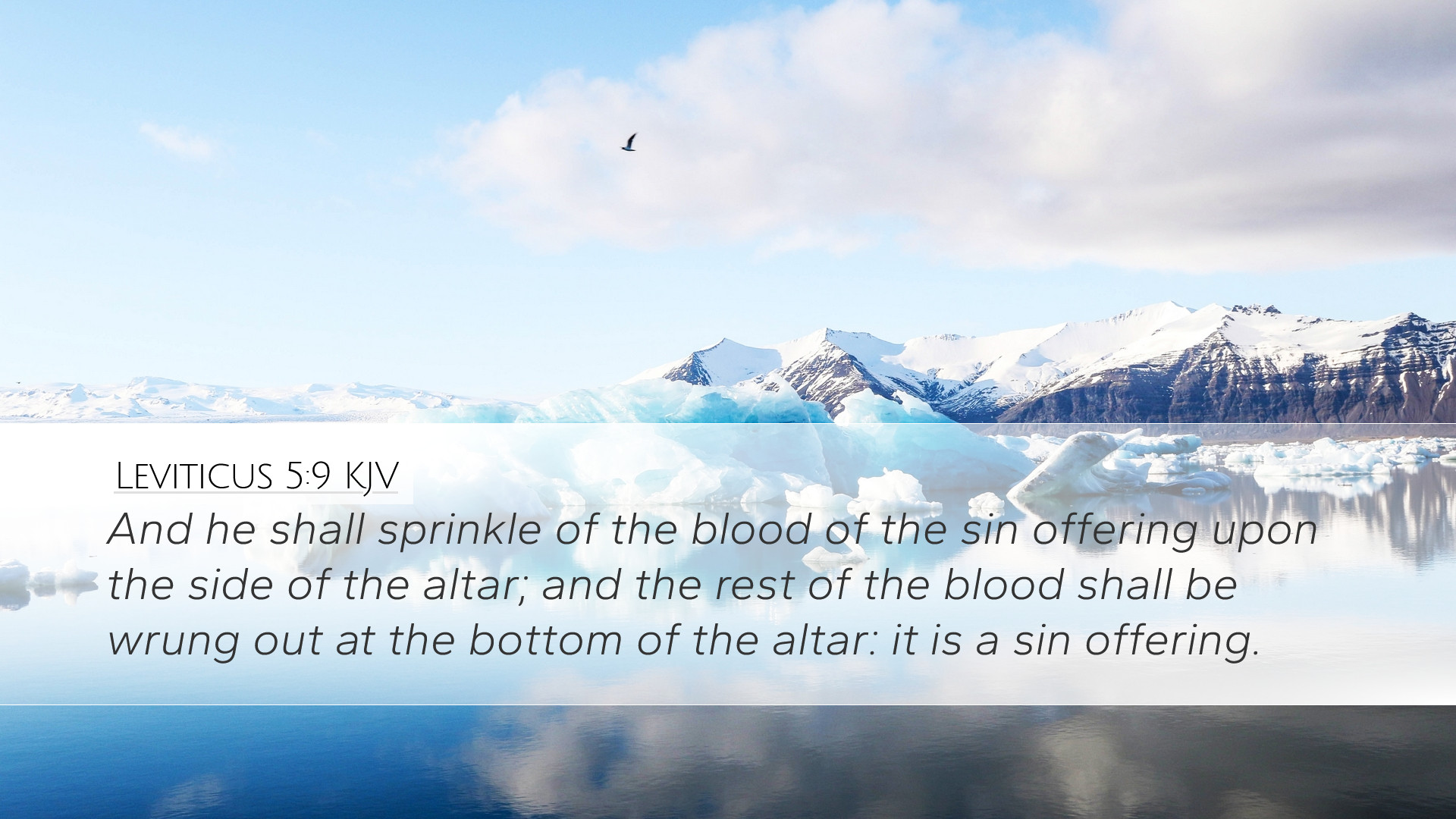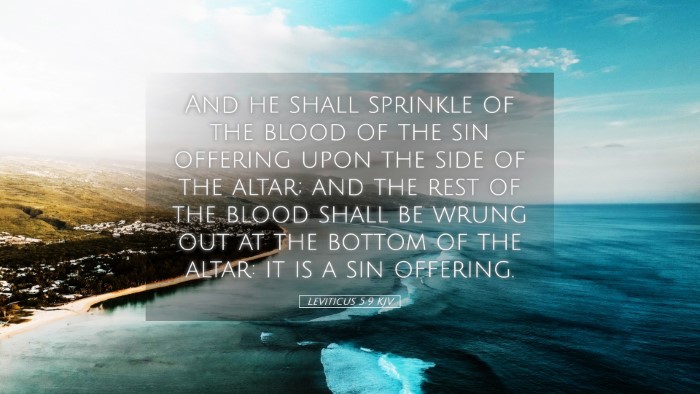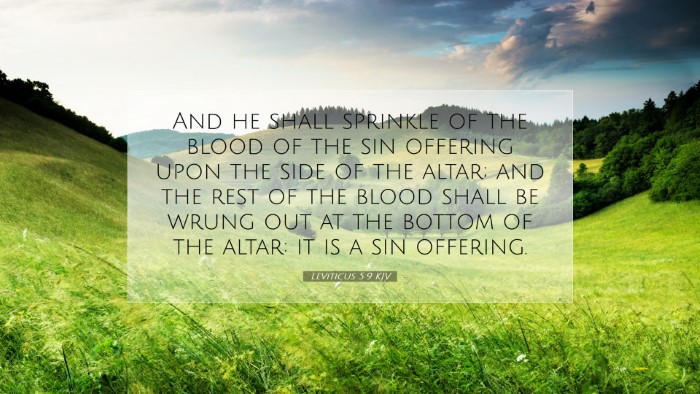Commentary on Leviticus 5:9
Verse Context and Significance
Leviticus 5:9 states, “And the priest shall take of the blood of the sin offering with his finger, and put it upon the horns of the altar of burnt offering, and shall pour out his blood at the bottom of the altar of burnt offering.” This verse, located within the Mosaic Law, emphasizes the importance of proper ritualistic conduct in the sacrificial system ordained by God for Israel.
Understanding the Sacrificial System
The sacrificial system in Leviticus was not merely about appeasing God's wrath but served as a means of maintaining the covenantal relationship between God and His people. Matthew Henry notes that sacrifices were central for expiation and signify both atonement for sin and gratitude for divine mercy.
Insights from Matthew Henry
-
The Role of the Priest: Henry emphasizes that the priest acts as an intermediary, playing a crucial role in facilitating the sinner's return to God through the sacrificial system. He explains that the priest's actions symbolically represent Christ's mediatorial role, who, as the ultimate High Priest, offers Himself for our sins.
-
The Significance of Blood: Blood holds a sacred place in the covenant, serving as the life-source that is given for atonement. It symbolizes the seriousness of sin and the required life-for-life exchange. The pouring out of blood at the base of the altar illustrates the extent to which God desires to deal with sin.
-
Holy Aspects of the Ritual: The act of ritualistic sacrifice emphasizes holiness, and Henry notes that this serves to remind the Israelites of their responsibility to live in accordance with God's commands and to maintain a pure worship experience.
Insights from Albert Barnes
-
Blood of the Sin Offering: Barnes emphasizes that the blood represents the idea of life. Its application not only signifies atonement, but also the purification process vital to be restored in communion with God.
-
The Horns of the Altar: The details concerning the horns of the altar reflect an ancient symbol of sanctuary and protection. Barnes interprets this action as a plea for refuge and provides a metaphorical foundation for understanding how Christ's sacrificial blood serves as our sanctuary.
-
Pouring Out Blood: The pouring out of blood at the altar's base symbolizes a complete offering. It reinforces the totality of the sacrifice made for sin, underscoring the concept that forgiveness is paid for in full, reminiscent of Christ's redemption.
Insights from Adam Clarke
-
The Act of Atonement: Clarke provides insight into the technical rituals presented in this chapter, viewing them through the lens of their theological implications. He elucidates that acts directed by the priest conducted as per divine instructions assure forgiveness, underlining the faith required for effective atonement.
-
Symbolism of the Altar: Clarke highlights that the sacrificial altar serves as a type of Christ, the ultimate sacrifice. The act of blood on the altar encapsulates the concept that it is through Christ's sacrifice alone we are reconciled with God.
-
Importance of Ritual Detail: Clarke also remarks on the minuteness of the law’s guidelines, stating it symbolizes God’s precise design for holiness among His people. Each element of the sacrificial process is imbued with meaningful significance that points toward greater spiritual truths.
Theological Implications
At its core, Leviticus 5:9 encapsulates profound theological truths about sin, holiness, and atonement that extend beyond ancient Israelite practices. The meticulous approach to sin offerings reflected God’s desire for His people to engage in restoration and reconciliation.
This verse serves as a precursor to understanding Jesus Christ’s sacrificial death in the New Testament, where His blood becomes the ultimate sin offering. As noted in Hebrews 9, Christ entered the Most Holy Place with His own blood, thus securing eternal redemption for those who believe.
Application for Pastors and Theologians
For pastors and theologians, Leviticus 5:9 presents a rich tapestry of insights into the nature of sin and atonement. The ritual described is a reminder of the seriousness with which God views sin and the cost of redemption that is ultimately fulfilled in Christ.
In preaching or teaching, these themes can be applied to communicate God’s love, justice, and the necessity of repentance to maintain a vibrant relationship with Him. The symbolic acts of the Old Testament, including those in this verse, should lead believers to a deeper understanding of New Testament grace.


